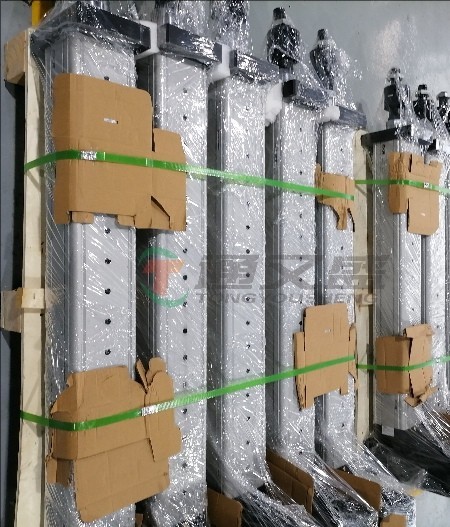When a fault occurs during the operation of a servo folding electric cylinder, we can inspect the mechanical components of the servo folding electric cylinder to troubleshoot the cause of the fault.
The mechanical components are the executive part of the servo folding electric cylinder that realizes linear motion, and their operating conditions directly affect the working performance of the servo folding electric cylinder. When inspecting the mechanical components, the following aspects should be focused on:
Improper installation of the servo folding electric cylinder may result in excessive friction and resistance during operation, thereby affecting its performance.
-
Check whether the installation of the servo folding electric cylinder is secure and whether all installation bolts are tightened to prevent loosening during operation.
-
Inspect the clearance and fit of guiding devices, such as whether the clearance between the guide rail and the slider is appropriate and whether the fit between the guide shaft and the guide sleeve is good.
Appropriate clearance and fit can ensure smooth operation of the servo folding electric cylinder and reduce wear. If the clearance of the guiding device is too small, it will increase friction and cause difficulty in operation; if the clearance is too large, it will affect the positioning accuracy. During installation, strictly follow the requirements of the installation manual to ensure installation quality.

The transmission components between the motor and the
servo folding electric cylinder are responsible for converting the rotational motion of the motor into the linear motion of the servo folding electric cylinder. If the transmission components are not tightened or damaged, the servo folding electric cylinder will fail to transmit power effectively, affecting its normal operation.
-
Check whether the tightening torque of the transmission components meets the requirements, such as whether the connecting bolts of the coupling are loose and whether the tension of the timing belt is appropriate.
-
Examine the transmission components for signs of damage such as wear, deformation, or fracture. Replace damaged components promptly.
For example, in a servo folding electric cylinder that starts and stops frequently, abnormal vibration and noise were detected during operation. Inspection revealed wear of the elastic element in the coupling. After replacing the elastic element, the cylinder resumed smooth operation.
Excessive load is one of the common causes of faults in servo folding electric cylinders.
-
A load exceeding the bearing capacity of the servo folding electric cylinder will make it operate 吃力 (strenuously) and may even damage the motor and transmission components. Re-evaluate the load to ensure it is within the rated bearing range of the cylinder. If the load is indeed too large, consider replacing the cylinder with a larger model or optimizing the load distribution to reduce the burden on the cylinder.
-
Check for load jams. Obstacles during the movement of the load will also affect the normal operation of the servo folding electric cylinder.
